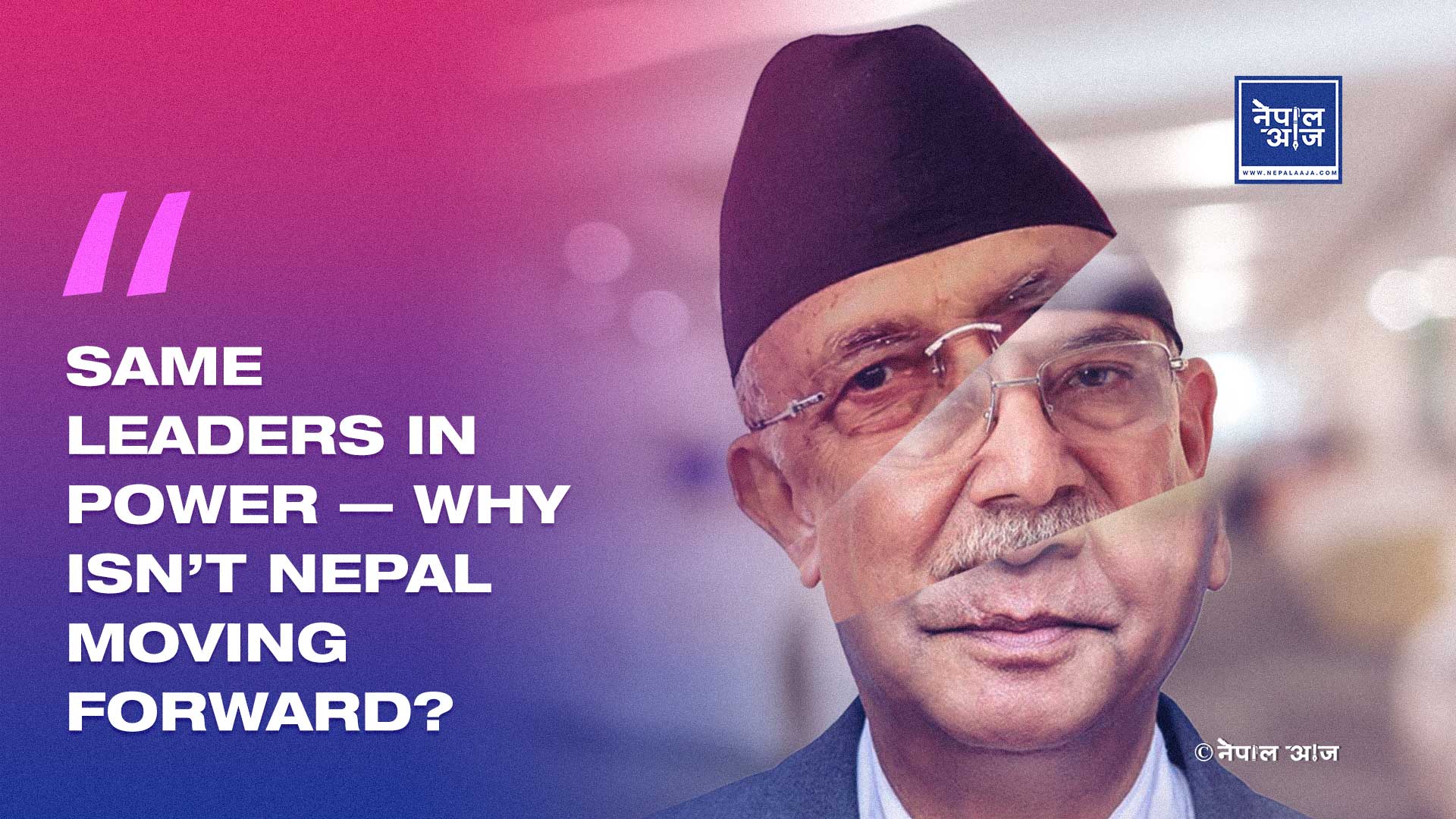Nepal’s Generation Gap Crisis: Why the Country’s Future Depends on a Leadership Shift

Kathmandu — For decades, Nepal’s political landscape has revolved around the same three figures — K.P. Oli, Sher Bahadur Deuba, and Pushpa Kamal Dahal ‘Prachanda’. Despite holding power repeatedly, analysts say these veteran leaders have failed to deliver stability, accountability, or meaningful progress.
A new generation of Nepalis is now demanding a political transformation — one that replaces geriatric leadership with youth-driven, data-based, and visionary governance. The call for “pustantar” (generational transfer of power) is growing louder, especially among the Gen-Z and millennial population who make up over half of Nepal’s citizens.
1️⃣ The Endless Power Game and Policy Paralysis
In the past decade alone, Nepal has changed governments more than a dozen times. Yet key national priorities — constitution implementation, post-earthquake reconstruction, and major infrastructure development — have seen chronic delays.
Transitional justice remains unresolved, victims still await accountability, and millions of young Nepalis continue to migrate abroad in frustration. Experts say structural reform has been impossible because “the same leaders keep returning to power with no roadmap for the future.”
2️⃣ Party Democracy in Decay
Within the Nepali Congress, CPN-UML, and Maoist Centre, internal democracy has eroded.
Both UML and Congress have scrapped age limits and extended leadership terms indefinitely, ensuring the same faces dominate their parties.
Emerging figures like Gagan Thapa, Bishwa Prakash Sharma, and Yogesh Bhattarai express growing disillusionment as party hierarchies block new leaders from rising. In the Maoist Centre, Dahal’s one-man control has stifled debate and discouraged generational change.
When internal democracy dies, observers warn, “the party stops reflecting society’s evolving needs.”
3️⃣ Corruption and the Collapse of Accountability
Repeated rule by the same power elite has coincided with a rise in corruption scandals — from gold smuggling to the Baluwatar land scam and the fake Bhutanese refugee racket.
A silent pact among top leaders has fueled a culture of impunity:
“You don’t expose my wrongdoings, I won’t question yours.”
Investigations drag on, key accused walk free, and the public’s faith in governance erodes. “When the main actors are declared innocent and the guilty enjoy impunity, accountability itself dies,” one analyst noted.
4️⃣ The Generational Divide and the Need for New Vision
Over 50% of Nepal’s population is under 30, yet national decision-making remains dominated by leaders from a bygone era.
The younger generation’s priorities — digital governance, transparency, innovation, and employment within Nepal — rarely reach the policy table.
Analysts warn that without youth-centric leadership, Nepal risks missing its demographic dividend and falling further behind in the 21st century.
Gen-Z and millennials no longer seek token inclusion; they are demanding genuine representation and transformation.
5️⃣ The Call for Change
The movement for leadership renewal is not about rejecting the old — it’s about respecting their contributions while demanding they make way for new energy and ideas.
A “bookshelf change in leadership” is how reformists describe it — allowing the second and third tiers of leaders to step forward.
“Nepal’s status quo has failed the people. It’s time for an honorable transition, not endless extension,” a political observer said.
The message is clear:
-
End the culture of personal power extension.
-
Enforce internal party democracy.
-
Let youth, professionals, and innovators take the helm.
“Nepal’s future begins with leadership change.
It’s time to replace power preservation with progress —
to let a new generation lead the nation forward.”




![From Kathmandu to the World: How Excel Students Are Winning Big [Admission Open]](https://nepalaaja.com/img/70194/medium/excel-college-info-eng-nep-2342.jpg)
